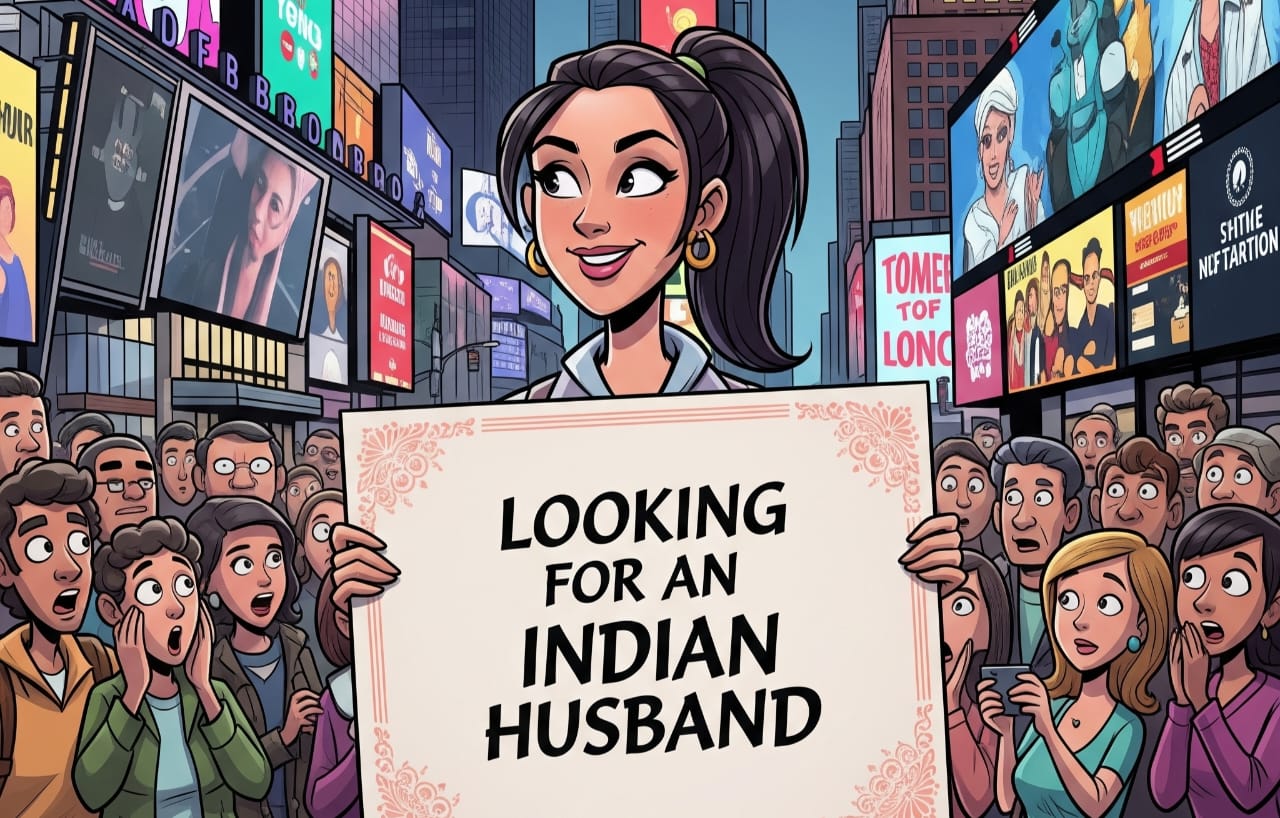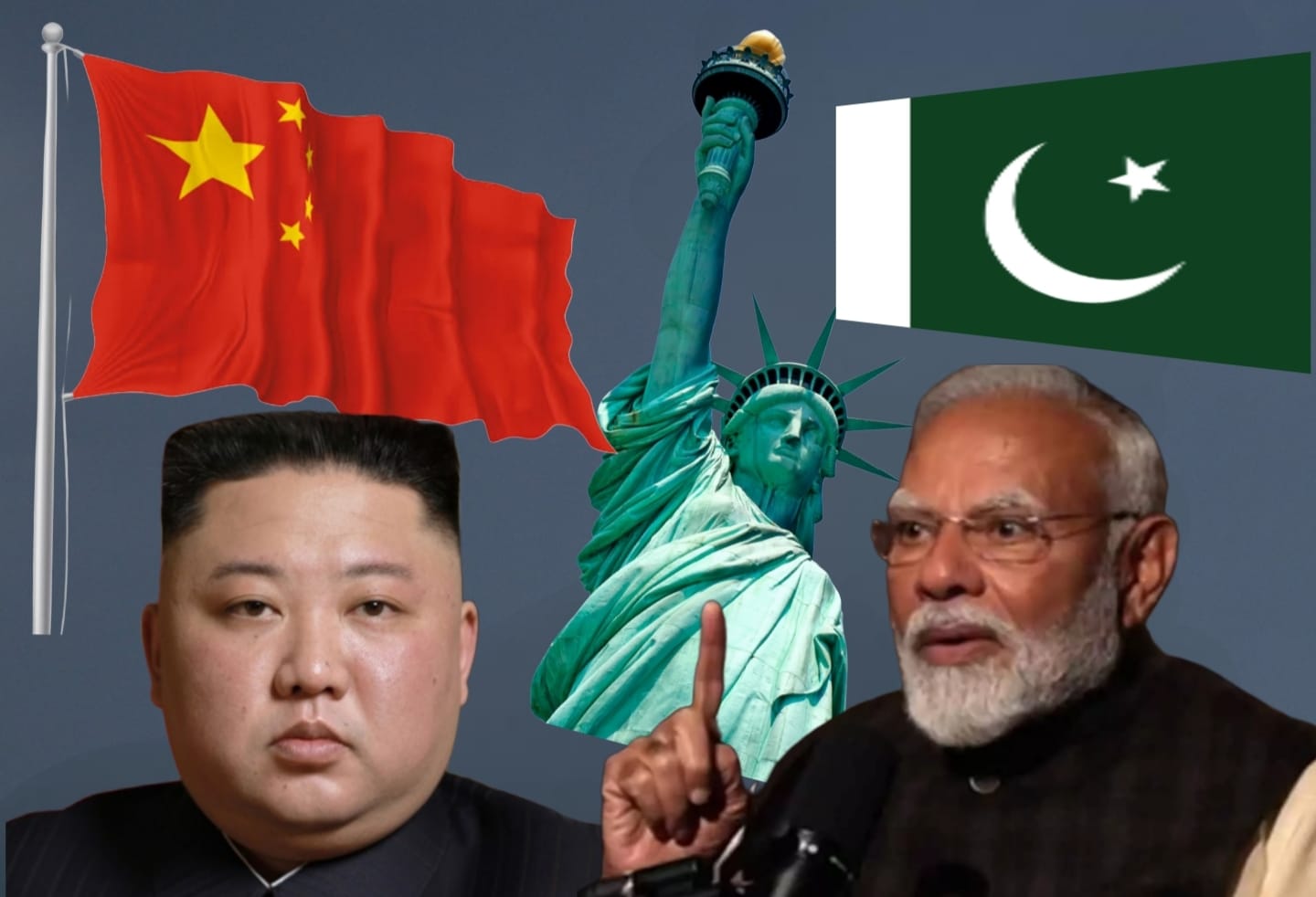Article Today, America:
Times Square in New York is known for its diversity and vibrant displays. Recently, it witnessed an unusual scene when an American woman held a placard reading “Looking for an Indian husband.” The act drew attention from passers-by and quickly went viral on social media platforms.
Social Media Reactions
The video generated mixed responses, ranging from humour to serious reflection. Many users suggested that Indian men’s emphasis on family ties and traditions could have influenced her choice. Others linked her preference to the impact of Bollywood films, Indian cuisine, and cricket. Some even speculated that the romantic image of Indian men in popular culture, including films of Shah Rukh Khan, may have shaped her decision.
Marriage and Cultural Contrasts
The development has also sparked discussions on the nature of Indian marriages. Users questioned whether the woman understood the scale of traditional Indian weddings, which often involve hundreds of relatives. Concerns were also raised about differences in food habits and family dynamics, which could pose challenges in cross-cultural unions.
Context of Immigration
The incident comes at a time when the Indian community in the United States is expanding its influence. Reports indicate a rise in undocumented migration from States like Gujarat and Punjab, particularly during the Trump administration’s stricter immigration measures. Instances of special prayers in temples for visa approvals have also been noted. Meanwhile, Indian Americans continue to play an increasingly significant role in U.S. politics, with many leaning towards the Democratic Party.
Symbolism and Implications
While some dismissed the act as a publicity stunt or social experiment, others pointed out that it highlighted the visibility of Indian Americans and their growing social weight. Several Indian men even responded online by sharing personal details, reflecting the video’s reach. Regardless of the motive, the episode underscored both the cultural appeal of Indian traditions abroad and the evolving power of the Indian diaspora in shaping narratives within American society.



